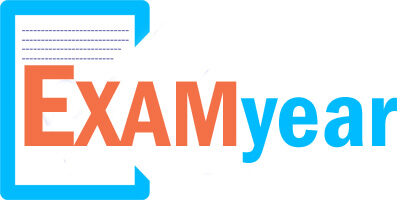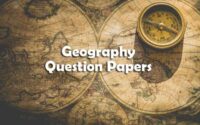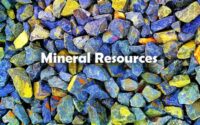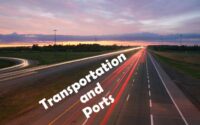Geography Hard Questions
Applicants can download the Geography Hard Questions. Last 5 Years Papers Geography Hard Questions Solved Papers. Free downloading links of the Geography Hard Previous Papers are enclosed below.

Interested applicants can get these Geography Hard Sample Papers for free of cost. Start your preparation by the Geography Questions by downloading the Last 5 Years Question Papers.
Hard Questions on Geography
1. Endogenetic forces cause relief to ………………
(A) Increase
(B) Decrease
(C) Get distributed
(D) Get concealed
2. Continental drift theory was not accepted because …………….
(A) The evidences cited were inadequate
(B) Explanation about force was not acceptable
(C) Jig-saw fit has gaps
(D) The evidences cited were not convincing
3. Which of the following is not true about the esker ?
(A) It is a depositional landform
(B) It is a landform of glacial action
(C) It is a long extending elevated form
(D) It is an egg shaped hill
4. Which of the following forms of transformation is not possible by wind ?
(A) Suspension
(B) Saltation
(C) Solution
(D) Drag
5. Which of the following landforms is predominently produced by weathering ?
(A) Abrasion platform
(B) Honeycomb and Taffoni
(C) Stack
(D) Geos
6. The gusty dry and warm winds of Rockies are :
(A) Foehn
(B) Loo
(C) Mistral
(D) Chinook
7. The greenhouse gas released by livestock is :
(A) Carbon dioxide
(B) Methane
(C) Ozone
(D) Nitrogen oxide
8. The average net radiation balance of atmosphere is ……………………. kilo langleys.
(A) Zero
(B) +79
(C) –79
(D) 66
9. The cyclone formed over Arabian Sea during June 2010 was named :
(A) Laila
(B) Aila
(C) Pheta
(D) Nargis
10. Concept of potential evapotranspiration was proposed first in :
(A) 1925
(B) 1931
(C) 1948
(D) 1955
11. Plants of monsoon region are called :
(A) Hydrophytes
(B) Hygrophytes
(C) Tropophytes
(D) Xerophytes
12. Blue mud results from disintegration of rocks containing :
(A) Iron oxide and ochreous matter
(B) Silicates of potassium and glauconite
(C) Skeletons and shells
(D) Sulphide and organic matter
13. The water body with highest salinity is :
(A) Lake Van
(B) Dead Sea
(C) Lake Sambhar
(D) Great Salt Lake
14. Which one of the following is the most important element of ecosystem ?
(A) Ecological succession
(B) Energy flow
(C) Food chain
(D) Food web
15. The warm current that flows along the Peruvian Coast is called :
(A) Peru
(B) El Nino
(C) La Nina
(D) Gulf Stream
16. Who is considered as the founder of human geography ?
(A) Humboldt
(B) Blache
(C) Ratzel
(D) Taylor
17. The term possibilism is coined by :
(A) Taylor
(B) Blache
(C) Hartshorne
(D) Febvre
18. Griffith Taylor promoted :
(A) Voluntarism
(B) Stop and go determinism
(C) Possibilism
(D) Determinism
19. Miss Semple was a disciple of :
(A) Ratzel
(B) Ritter
(C) Humboldt
(D) Blache
20. ‘‘Anthropogeographie’’ is authored by :
(A) Yi-Fu-Tuan
(B) Ratzel
(C) Spencer
(D) Blache
| Question Bank | MCQ |
| Mock Test | Easy Question |
| Important Questions | Hard Question |
| Sample Papers | Trivia |
| Model Set | Quiz |
| Previous Question |
21. …………………. model appears similar to that of Von Thunen.
(A) Multiple nuclie
(B) Sector
(C) Concentric
(D) Distance decay
22. Settlement developing in dry elevated location surrounded by marshy area is called :
(A) Wet point settlement
(B) Dry point settlement
(C) Oasis settlement
(D) Hill top settlement
23. Who introduced the concept of Rank-size rule ?
(A) R.E. Dickinson
(B) G.K. Zipf
(C) A.E. Smailes
(D) W. Christaller
24. Natural increase in population refers to :
(A) Number of births minus number of deaths
(B) Number of births minus number of deaths minus number of outmigrants
(C) Number of inmegrants minus number of outmigrants
(D) Number of births plus number of inmigrants minus number of outmigrants
25. Migration of sheperds in hilly area is termed as ………………
(A) Commuting
(B) Seasonal migration
(C) Stepwise migration
(D) Transhumance
26. …………………. occupation is ‘‘Red Collar’’ job.
(A) Hotellier
(B) Beautician
(C) Research scientist
(D) Fisherman
27. Resources are :
(A) Natural endowments
(B) Valuable endowments
(C) Natural potentialities
(D) Exploited potentialities
28. Agglomeration economies are :
(A) Internal to firm
(B) Internal to industry
(C) External to industry
(D) Internal to region
29. The term ‘Range of goods’ refers to :
(A) Range of goods sold
(B) Spatial range of goods sold
(C) Maximum distance over which a consumer moves to purchase goods
(D) Range of customer drawn
30. Japan imports wood because she :
(A) Does not possess forests
(B) Wants to save its forests
(C) Has poor quality forests
(D) Has no accessible forests
31. Mackinder termed Eurasia as ‘‘World Island’’ because :
(A) It was surrounded by oceans
(B) It had the largest number of nations
(C) It was at the centre of the world
(D) It accounted for about 40% of land and 80% of world population
32. The worst form of Apartheid in the 20th century was in :
(A) Congo
(B) Kenya
(C) Ethiopia
(D) South Africa
33. Central Asia is a part of :
(A) Islamic culture realm
(B) East Asian culture realm
(C) Meso-African culture realm
(D) European culture realm
34. Which is the smallest minority religious group in Maharashtra ?
(A) Buddhists
(B) Christians
(C) Jains
(D) Sikhs
35. Garo and Khasi tribes are found in :
(A) Assam
(B) Arunachal Pradesh
(C) Manipur
(D) Meghalaya
36. ‘‘Functional’’ region is best described as an area with :
(A) Functional uniformity
(B) Functional superiority
(C) Functional nodality
(D) Common interest
37. …………………….. is the most refined technique for agglomerative regionalisation.
(A) Ranking
(B) Median and quartile
(C) Mean and standard deviation
(D) ‘Z’ score
38. India had annual plans in ………….
(A) Late 1960s
(B) Early 1970s
(C) Late 1970s
(D) Mid 1980s
39. Green Revolution aimed at :
(A) Enhancing farm production
(B) Increasing farm yield
(C) Reducing social disparities
(D) Reducing regional disparities
40. Chhattisgarh is a :
(A) Dynamic region
(B) Potential region
(C) Problem region
(D) Depressed region
41. The highest peak in India is :
(A) Mt. Everest
(B) Godwin Austin
(C) Kanchenjunga
(D) Nandadevi
42. Identify the pair that does not match :
(A) Regur—Basalt
(B) Red soil—Granite
(C) Clayey soil—Schist
(D) Laterites soil—Sandstone
43. The coast of Tamil Nadu has ………….. forests.
(A) Dry deciduous
(B) Moist deciduous
(C) Dry evergreen
(D) Evergreen
44. Maximum proportion of area under well irrigation is in :
(A) Gujarat
(B) Maharashtra
(C) Punjab
(D) Rajasthan
45. Maximum production of bauxite in India comes from :
(A) Gujarat
(B) Jharkhand
(C) Orissa
(D) Maharashtra
46. For isopleth maps the locational data related to ………………………. is necessary.
(A) Points
(B) Lines
(C) Areas
(D) Time
47. Which of the following IRS satellite data can facilitate developing a true colour composite ?
(A) IRS 1A/B
(B) IRS 1C/D
(C) Resource sat 1
(D) Cartosat
48. A ratio of mean to the standard deviation is referred as …………..
(A) coefficient of variation
(B) coefficient of correlation
(C) coefficient of regression
(D) coefficient of concentration
49. Which two of the following are not parametric tests ?
(a) Students ‘t’test
(b) Chi-square test
(c) Snedecor’s ‘F’ test
(d) Kolmogrove-Smirnov test
(A) (a) and (b)
(B) (b) and (c)
(C) (b) and (d)
(D) (a) and (c)
50. Which of the following sampling techniques is recommended to draw a sample of villages, spread in a number of Talukas, from a district ?
(A) Systematic sampling
(B) Cluster sampling
(C) Stratified sampling
(D) Random sampling



